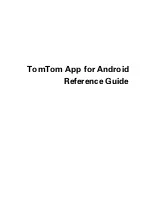
IBM-2007-04569-E-01
©2007 Sine Nomine Associates
4
2.1.3 Extend
The extend slice of the PIE can be implemented by a Linux system acting as both a gateway to
the Internet and as a host for new e-business applications. Running in an IFL the Linux system
will not affect the MSU rating of the System z and thus the software bill for the z/VSE portfolio.
It also allows its applications to be accessed from z/VSE at memory-to-memory speeds via the
use of hipersockets. Linux is able to exploit the z/VSE connectors to extend the reach of the
existing z/VSE applications and to promote the growth of new ones.
There are several ways people are using Linux on System z to extend their existing applications.
2.1.3.1 Exploiting Connectors
Java-based connector provide connectivity to z/VSE via TCP/IP. They provide access to, for
example a Web Application Server, VSAM, POWER, the Librarian, ICCF and the z/VSE
console.
The DB2-based connector uses DRDA over TCP/IP to provide JDBC/ODBC access to z/VSE-
based DB2 systems as well as VSAM and DL/I based data.
Tools such as the z/VSE navigator provide a face to z/VSE that is intuitive to today's workstation
users which means they can be immediately productive when using the system: there is no
requirement to train them how to use the older 3270 mechanisms.
2.1.3.2 Web Serving
One simple strategy is the serving of z/VSE data exported via NFS through an Apache webserver.
This can be done via a z/VSE-based webserver but using Apache allows access to a greater pool
of programmers are familiar with Apache's way of doing things.
A more complex strategy is to run WebSphere on the Linux system and using facilities like the
MQ client, DB2 Connect and the CICS Transaction Gateway to serve data and transactions to and
from the z/VSE system.
2.1.3.3 DB2 Connect
DB2 Connect enables a Linux system, and the clients that connect to it, to access z/VSE-based
DB2 instances.
2.1.3.4 CICS Transaction Gateway
The CICS Transaction Gateway enables Java applications running on another server or
workstation to access a CICS system running on z/VSE via the Java Daemon gateway. This
technology enables the serving of Java applets from a webserver.
Impact:
The PIE strategy is a roadmap for maintaining and enhancing the viability of z/VSE
based systems into the future. The connectors and utilities are not “vaporware” and are available
now to facilitate the extension of z/VSE systems and applications. Access to strategic middleware
such as WebSphere and thus to a range of new applications is also a key to enhancing the value of
z/VSE.










































